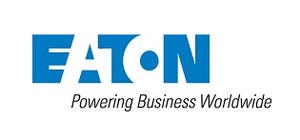Generative AI Power Needs Provide New Partner Opportunities
AI is sparking an upsurge in power requirements — representing a springboard for increased sales of larger UPSs, specifically in edge AI applications.
July 27, 2023

From directing self-driving cars to accurately predicting the weather to helping doctors identify potential health risks in patients, the feats achieved through artificial intelligence continue to expand. As AI technologies become further embedded into our daily lives and routines, they are creating a host of new opportunities.
Taking Generative AI to the Edge
Generative AI — a type of artificial intelligence technology that can produce content such as high-quality text and graphics in a matter of seconds — has been garnering much hype. If current trends continue, generative AI data center server infrastructure plus operating costs are slated to exceed $76 billion by 2028, according to forecasts by Tirias Research. To put the projection into perspective, that’s more than double the estimated annual operating cost of Amazon’s cloud service AWS, which encompasses one-third of the current cloud infrastructure services market.
Not only is generative AI growing, but it’s also sparking an upsurge in power requirements — representing a springboard for increased sales of larger UPSs, specifically in edge AI applications.
A Powerful Force that Requires More Power
It’s important to understand that the infrastructure requirements of generative AI are different than that of general-purpose IT applications. Because the innovative capabilities afforded by generative AI require the accelerated processing performance of GPUs, the technology is subsequently bolstering power consumption needs. And that means demand will be increasing for larger uninterruptible power systems (UPSs) and power distribution units (PDUs) able to handle high power and other physical infrastructure solutions. The traditional 5kW per rack will soon turn into 20kW per rack or more.
Moreover, the massive power consumption expansion will increase the need for battery backup systems to help organizations of every size cope with pervasive power outages that are projected to result from the subsequent supply-demand imbalance.
Around the Corner — But Not Tomorrow
Despite all the hype surrounding generative AI, widespread adoption still looks to be at least two years away, hindered by the need for technology to democratize, security concerns to be alleviated and costs to drop enough to make business sense for enterprise customers. Looking ahead two years — as AI-ready client devices become widely available and AI on CPUs will drive down costs – we will likely see a hybrid distributed client approach and enterprise customers wishing to own their generative AI infrastructure instead of depending on public cloud providers.
In the meantime, channel partners can expect to begin entertaining interest and questions from customers. Specifying the power infrastructure for 20 kW per rack and up can be complex and requires specific skills. This could be a way for partners to further develop their power practice and add more differentiation, with the help of Eaton support and training teams.
As Eaton is a stronger player in the larger UPS space, and we have long supported channel partners with application engineering and face-to-face engagement, this new market trend will put us in an excellent position to help partners increase sales of larger units. As UPSs in the 10 kW to 20 kW range become the new norm, we will be here to support you.
This guest blog is part of a Channel Futures sponsorship.
About the Author(s)
You May Also Like



